
七月诞生石:红宝石的魅力、神秘与魅力
七月出生的人,拥有一颗璀璨夺目的红宝石作为七月诞生石。红宝石色泽鲜艳,质地坚韧,象征着七月光明、欢乐和满足。
七月(July)于公元前44年因一位出生于七月的人物——尤利乌斯·凯撒而得名。此前,古罗马人将七月称为Quintilis ,意为“第五”,因为三月是一年的开始。
古人认为七月由众神之王和天神朱庇特(希腊神话中的宙斯)掌管。太阳神阿波罗也是七月活动中的一大亮点。
除了太阳,另一颗与七月相关的恒星是天狼星,它是七月份最亮的恒星。天狼星也被称为“犬星”,它在七八月的地平线上升起和落下,被称为“三伏天”。
既然您已经了解了您的出生月份,现在是时候了解您的诞生石了。今天,我们将为您全面介绍七月诞生石的历史、含义、力量和价值因素,并提供一些可供选择的宝石。
video: https://youtu.be/AvkdD6yVLzA
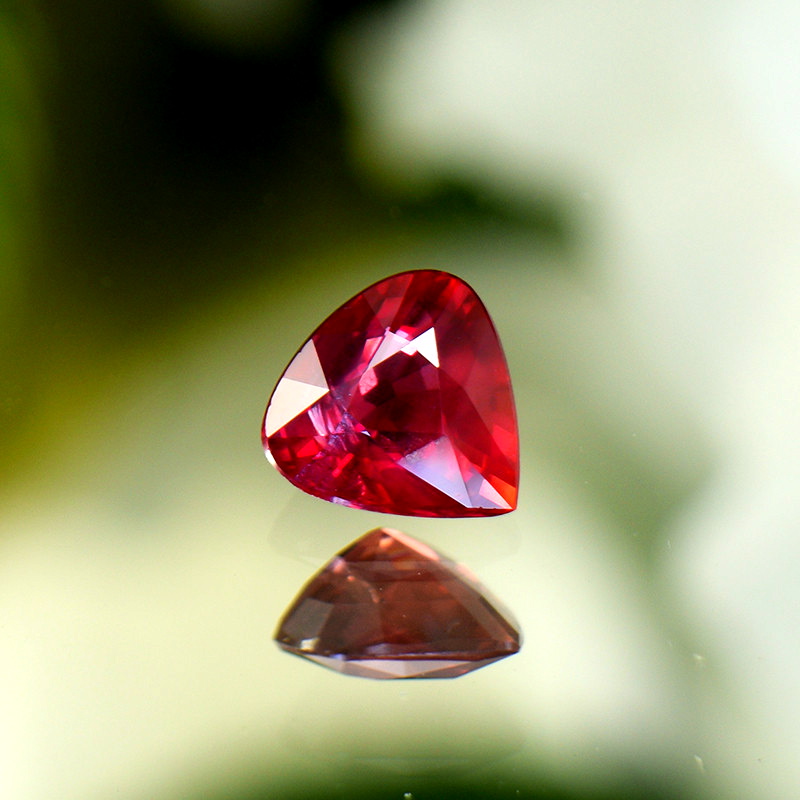
七月诞生石的历史和文化意义:红宝石
璀璨的红宝石是传统的七月诞生石。这种珍贵的宝石也是传统的15周年、40周年和80周年结婚纪念石。
“红宝石”这个名字源自拉丁语rubeus ,意为“红色”,原因很明显。
七月诞生石红宝石的历史源远流长,其传说可以追溯到远古时代。
红宝石在古代文明中的地位
已知最古老的红宝石是 2021 年在格陵兰岛发现的一颗具有 25 亿年历史的红宝石。但红宝石的早期历史大部分位于南亚和东南亚,特别是缅甸和印度。
缅甸很可能早在公元前2500年就开始开采红宝石,因为在抹谷地区,人们用石器时代的工具发现了红宝石。缅甸的红宝石记录可以追溯到公元6世纪,而抹谷在大约800年的时间里一直是优质红宝石的主要产地!
古代缅甸的习俗包括战士将红宝石放入皮肤中以在战斗中立于不败之地,而国王则将最大的红宝石据为己有。
七月诞生石在印度和印度教中也有历史。
红宝石的梵语单词是Ratnaraj ,意为“宝石之王”。吠陀占星家认为红宝石象征着太阳神苏利耶。古印度教徒向至高神克里希纳献上红宝石,祈求转世成为皇帝或国王。
早期的宝石学来自印度,当时印度教徒将红宝石分为 4 个等级,其中最好的被称为“婆罗门”。
当然,有关红宝石的信仰并不仅限于印度和缅甸。
古希腊人相信红宝石可以融化蜡。伊斯兰传说称,红宝石是由人类始祖亚当被逐出伊甸园后创造的。
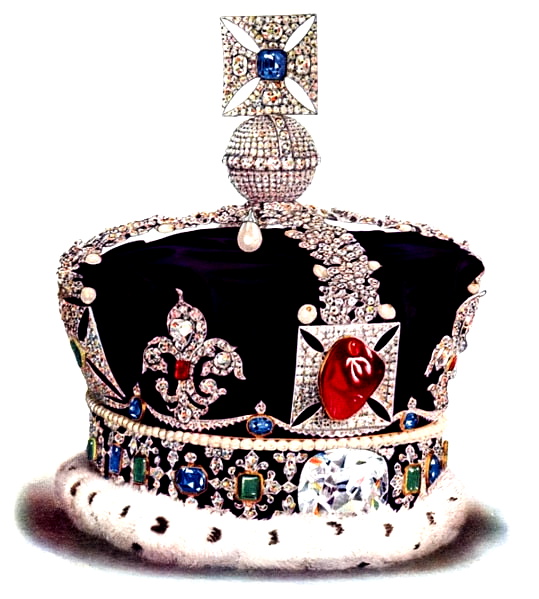 上图:英国帝国皇冠,以“黑王子红宝石”为中心石 | 图片来源:Cyril James Humphries Davenport,约 1919 年,公共领域
上图:英国帝国皇冠,以“黑王子红宝石”为中心石 | 图片来源:Cyril James Humphries Davenport,约 1919 年,公共领域
皇家贵族传统中的红宝石
七月诞生石在东南亚皇室中很受欢迎,而随着红宝石被引入中世纪欧洲,它的名气也越来越大。
在为路易十四国王获取红宝石时,法国宝石商人让·巴蒂斯特·塔维涅 (Jean-Baptiste Tavernier) 写道,红宝石是印度皇家宫廷之间交易的最有价值的宝石。
文艺复兴时期的皇室拥有许多独特的红宝石,从亨利八世国王著名的红宝石和珍珠项链肖像到神圣罗马帝国皇帝鲁道夫二世用于治疗的鸡蛋大小的红宝石。
著名红宝石的例子
以下是皇室成员、贵族或名人佩戴的七月诞生石的一些其他例子:
奥地利女大公玛丽亚·安娜的红宝石:1) 镶嵌钻石蝴蝶结 - 由她的父亲特申公爵弗里德里希大公赠予,以纪念玛丽亚儿子的诞生;2018 年以超过 372,000 美元的价格售出 2) 镶有钻石的订婚戒指
萨瑟兰红宝石、钻石和珍珠项链:为伊丽莎白·戈登(萨瑟兰伯爵夫人)之子斯塔福德侯爵的婚礼而制作;制作于 1849 年,使用了玛丽·安托瓦内特在安托瓦内特去世前秘密赠予伊丽莎白保管的灰色珍珠
梅尼埃红宝石和钻石胸针:原本是拿破仑·波拿巴于 1810 年委托制作的红宝石和钻石套装的一部分,用于法国王室珠宝,供奥地利皇后玛丽·路易丝佩戴;1816 年为昂古莱姆皇家公爵夫人玛丽·特蕾莎·夏洛特重新镶嵌;该套装于 1887 年在卢浮宫拍卖会上售出,耳环后来改制成胸针,于 2021 年在佳士得拍卖行拍卖
伊丽莎白·泰勒的红宝石套件:卡地亚未经处理的红宝石和钻石首饰套装;1957 年由丈夫迈克·托德赠送给伊丽莎白·泰勒;2011 年在佳士得拍卖会上售出
从历史上看,红宝石常常被误认为是其他红色宝石,尤其是尖晶石。
两个著名的例子是“黑王子红宝石”(如上图所示),这是一颗重 170 克拉的红色尖晶石凸圆形宝石,可追溯到 14 世纪中期,以及“帖木儿红宝石”,这是一颗重 352 克拉的抛光红色尖晶石,直到 1851 年才被认为是红宝石。
红宝石和尖晶石之间的一个主要区别是它们的矿物学。
地质奇迹:红宝石的形成
红宝石矿物属于刚玉的一种,具体来说是红色刚玉。其他所有颜色都属于蓝宝石。作为刚玉的一种,红宝石是仅次于钻石的第二硬宝石, 莫氏硬度为9。
刚玉形成于富含铝但不含硅的火成岩中。或者,当富含铝的海水流经古老的海床,将原有的矿物改变成刚玉时,就会形成刚玉。
这些矿物由氧化铝组成,其中的各种杂质赋予了不同的颜色,例如红宝石标志性的红色色调。
 上图:星光红宝石
上图:星光红宝石
璀璨红:揭开红宝石的魅力
纯净的刚玉是无色的,红宝石因含有杂质而呈现红色。
微量的铬取代了部分铝,使红宝石呈现出鲜艳的红色。铬含量越高,红色越浓烈、越明亮,荧光也越强。三价铁杂质则会导致粉红色或橙色的底色。
红宝石生日石的颜色范围从粉红色到深红色,有时还可能带有紫色、粉红色或橙色的次生色调。然而,一些宝石学家对粉红色刚玉究竟是红宝石还是粉红色蓝宝石存在争议。
七月诞生石的颜色、来源和形成决定了其不同的种类:
鸽血红宝石:中强至强饱和度,高强度,纯红色,具有中强荧光;顶级缅甸红宝石或“抹谷”红宝石的缩影
星光红宝石:通过星光在其表面反射出多条星光
莫桑比克红宝石:占珠宝中 2 克拉以上红宝石的大多数;通常为深紫红色至深红色,有时接近鸽血红宝石的标准
泰国红宝石:产自泰国,另一个顶级红宝石产地;颜色浓郁、均匀、深红色,净度高(除非存在光晕或盘状裂缝)
日内瓦红宝石:最古老的合成宝石和合成红宝石,约于1885年诞生
凡尔纳伊红宝石:通过“凡尔纳伊法”或火焰熔融法制成的合成红宝石
助熔红宝石:将氧化铝溶解在熔融的助熔剂中,然后结晶而形成的合成红宝石
颜色只是七月诞生石价值的一个因素。
 上图:梨形多面莫桑比克红宝石
上图:梨形多面莫桑比克红宝石
4C:评估红宝石品质
红宝石的分级基于“4C”标准:颜色、切工、净度和克拉重量。颜色的影响最大,其次是净度、切工和克拉重量。
颜色
最珍贵的红宝石颜色是“鸽血色”,一种明亮的血红色,没有底色。
橙色或紫色等次要色调应尽量少用。更明亮、更饱和的红色色调是最好的。
明晰
红宝石具有II 型净度,这意味着大多数红宝石都有可见的内含物,但高品质的红宝石样本不会有肉眼可见的内含物。
红宝石中最常见的内含物是“丝状”,即细小的针状金红石晶体。裂隙或空洞也很常见,这可能会降低红宝石的坚固性。
切
许多顶级红宝石都经过刻面处理。最佳的刻面切割能够最大程度地提升宝石的颜色、重量和亮度。许多红宝石被刻成圆形、垫形或梨形。
裂隙较多的红宝石通常被切割成凸圆形或雕刻而成。星光红宝石也必须切割成凸圆形。
克拉重量
由于红宝石通常呈短小的板状晶体,超过1克拉的优质红宝石样品并不常见。随着尺寸的增大,品质通常会下降,因此大颗、优质的红宝石十分罕见。
治疗
某些红宝石可能会经过某些处理,而其他处理则会降低七月生日石的价值。热处理可以改善颜色和净度,这种处理非常常见。
另一种处理方法是填充裂缝,通常使用铅玻璃来改善红宝石的透明度,有时还可以增强其颜色。
有争议的铍扩散处理,价值肯定较低。
换个话题,七月诞生石在精神上意味着什么?
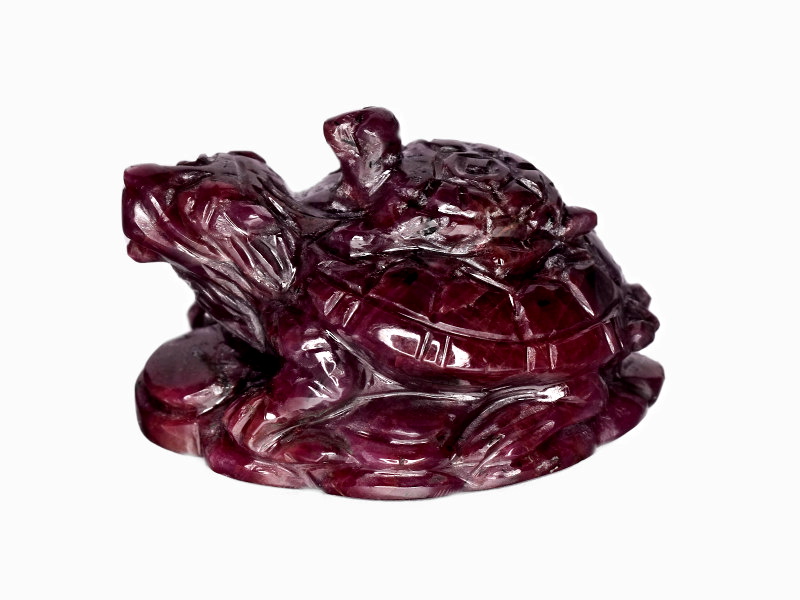
七月诞生石的象征意义和精神联系
多年来,红宝石已获得相当高的灵性声誉。红宝石的一些玄学昵称如下:
爱情之石
预言石
保护石
激情之石
显化之石
可以说,七月诞生石最突出的含义与血液有关。
古代社会相信红宝石能赋予勇气和无敌的力量。另一些人则用红宝石治疗失血、循环系统疾病和炎症。
另一种说法是,红宝石能带来保护,佩戴在左手可以避开危险。有些人将诞生石的保护功效延伸到防止感情纠纷,例如蒂芙尼公司于1870年发表的这首诗:
闪耀的红宝石应该装饰,
所有七月出生的人,
这样他们就免除一切罪孽,
来自爱人的疑惑和焦虑。
在东方传统中,红宝石有时代表佛像上的“第三只眼”,象征着觉悟。毫不奇怪,红宝石也是第三只眼脉轮石。
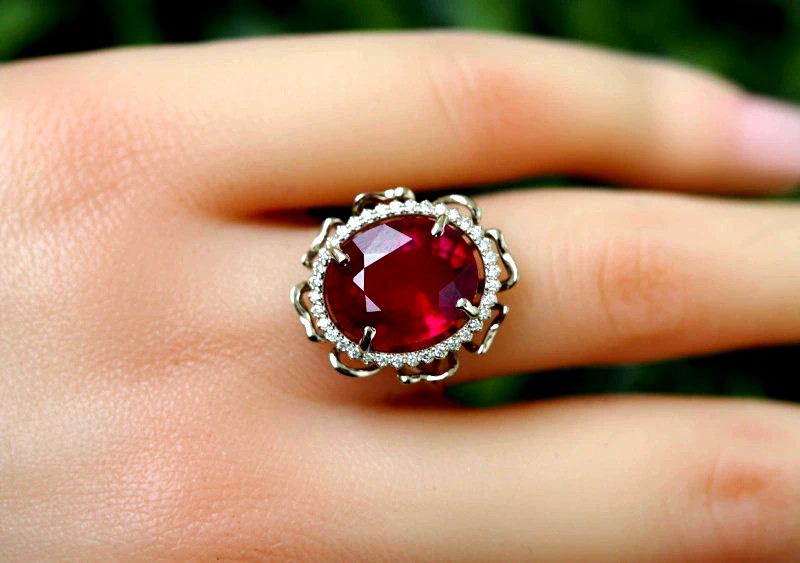 上图:多面红宝石戒指,镶嵌白色钻石
上图:多面红宝石戒指,镶嵌白色钻石
道德采矿与可持续性
许多熟悉冲突钻石的有意识的消费者可能会对红宝石开采的道德问题感到疑惑。
与钻石不同,红宝石没有像金伯利进程那样的道德认证。卖家必须透明地说明他们的红宝石来源地和供应商。
对于大多数有良知的珠宝商来说,这意味着采购非缅甸红宝石。
为什么?缅甸红宝石产业已被证实腐败,为军事政变和压迫政权提供资金。莫桑比克的报告也表明红宝石矿工的人权受到侵犯。
相反,许多珠宝商选择来自斯里兰卡、坦桑尼亚和格陵兰等地规模较小、独立拥有和审查过的矿场的红宝石。
另一个更符合道德规范且可持续的选择是合成红宝石,它拥有与天然红宝石相同的化学和物理特性,但制造于实验室。合成红宝石同样美丽,但成本却低得多。
但是七月诞生石中除了红宝石之外的其他宝石又如何呢?
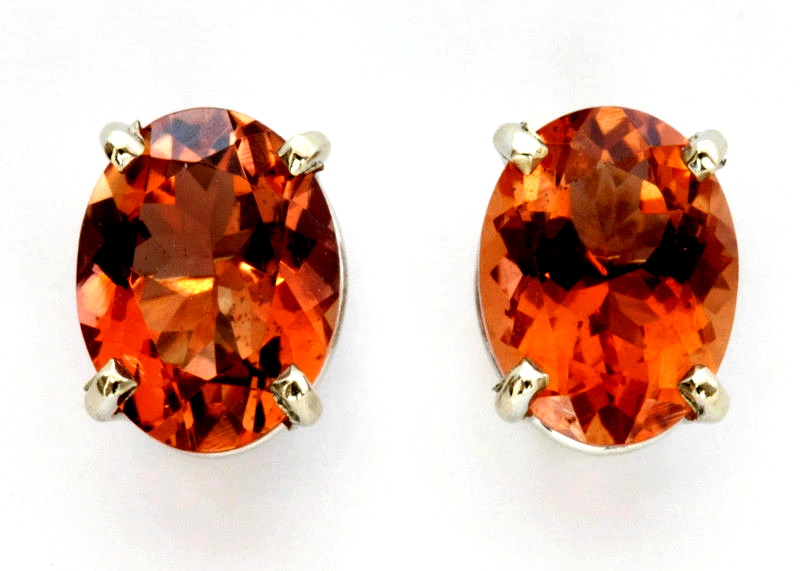 上图:俄勒冈州刻面日光石耳环
上图:俄勒冈州刻面日光石耳环
其他七月诞生石
七月有两颗诞生石吗?很多人会说有!另一种常列的七月诞生石是缟玛瑙,它是玉髓的一种。
事实上,缟玛瑙和它的同属玉髓品种红玉髓,是受圣经宝石清单启发而最初被选为七月诞生石的。美国金匠协会于1937年编制的诞生石清单,将红玉髓和缟玛瑙列为七月诞生石的替代选择。
在印度教传统中,七月的诞生石是蓝宝石,它具有红宝石的所有特性,但颜色更加丰富。
从占星学角度来看,什么水晶适合七月出生的狮子座?受太阳守护,七月出生的狮子座当然适合佩戴红宝石,但另一个选择是闪亮的日光石,这是一种颜色较浅的长石,带有金属光泽,被称为洒金现象。
那么,巨蟹座的七月宝石选择如何呢?七月出生的巨蟹座可以从七月诞生石——缟玛瑙中受益。缟玛瑙在精神层面上与和谐的伴侣关系息息相关,可以帮助巨蟹座增强意志力,维护珍贵的人际关系。
如果您只是在寻找外观相似的红宝石替代品,那么可以选择以下几种:
一旦选择了石头,就该决定如何处理它了!
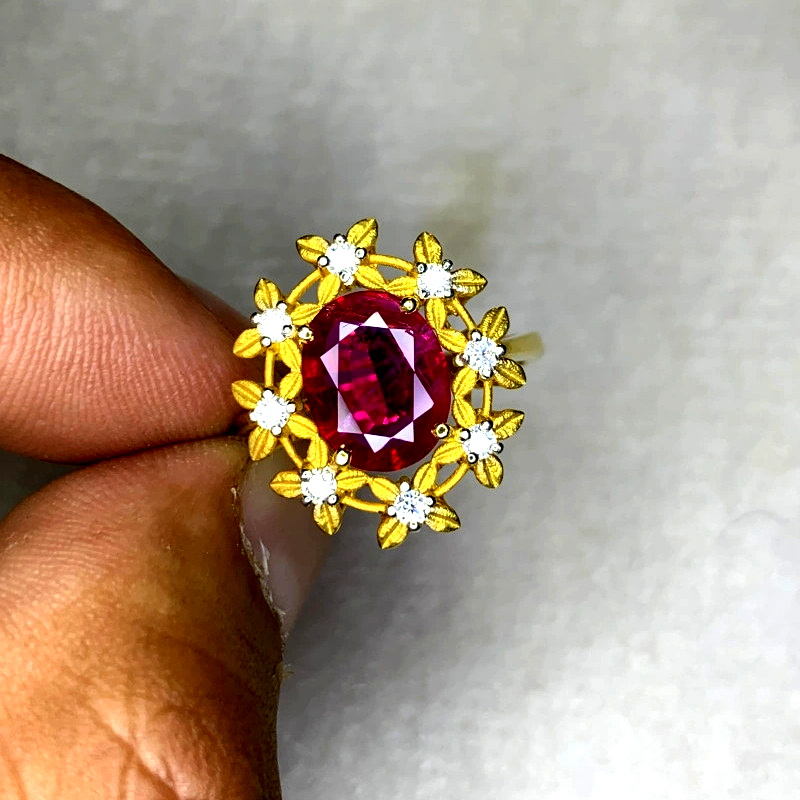 上图:镶嵌白钻的刻面红宝石金戒指
上图:镶嵌白钻的刻面红宝石金戒指
个性化七月诞生石礼品和庆祝活动
选择七月诞生石礼物是一种有意义的庆祝方式,可以向您所爱的人表达他们对您的意义。
如果礼物个性化,意义就更深刻了。以下是一些七月诞生石首饰和其他礼物的推荐:
七月诞生石项链,带有姓名首字母的字母吊坠
带有七月诞生石和您自己的诞生石的手链
镶嵌诞生石的钨戒指
镶嵌诞生石的可叠戴戒指
红宝石耳钉被刻成他们最喜欢的形状
甚至不必是珠宝!你可以买一些用红宝石或其他七月诞生石雕刻或制作的家居装饰品,一支主题诞生石蜡烛,一幅他们最喜欢的七月诞生石的水彩画,甚至一个诞生石钥匙扣。
重要的是,它发自内心,并庆祝您七月出生的爱人!
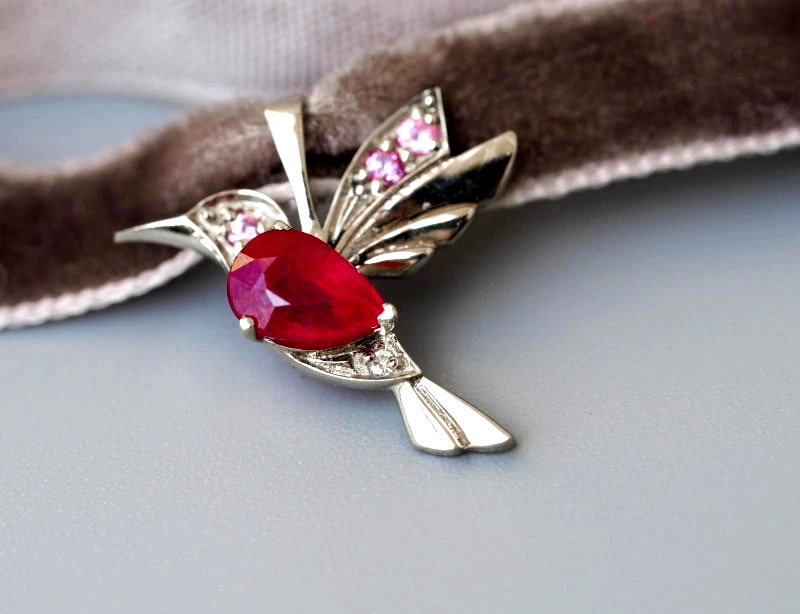
探索七月诞生石的神奇世界!
红宝石是传奇而永恒的宝石,象征着夏日的温暖与活力。七月出生的人可以用这些华丽的诞生石或其他替代诞生石来纪念这个节日。重要的是,您的七月诞生石代表着您!
搜索Gemstone Encyclopedia
最新的文章
文章分类
How To's is where you will find helpful articles from gem Rock Auctions on how to cut gemstones, select gemstones and buy gemstones.
9文章数

